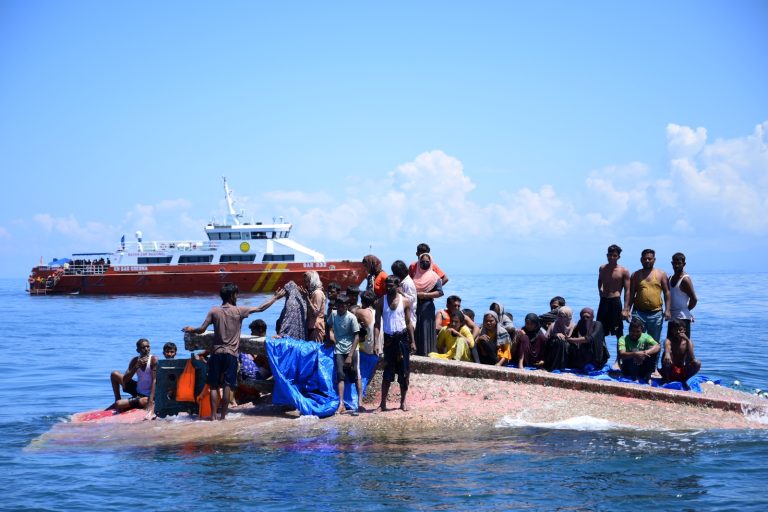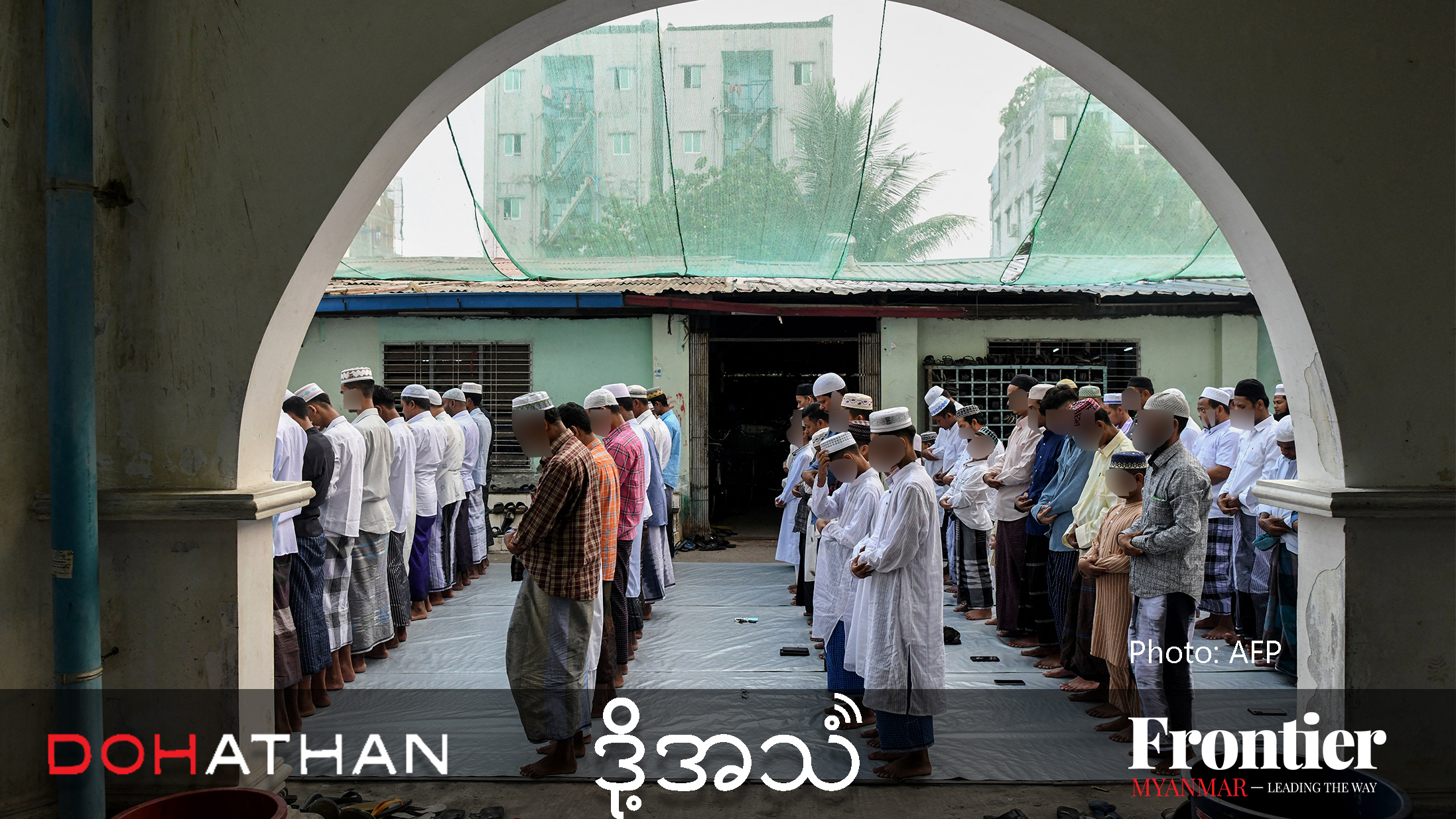Myanmar’s Enemy Within is a highly readable exploration of the darkest aspect of the transition, from communal violence to hate speech and the politics of exclusion.
By ALEX BOOKBINDER | FRONTIER
IN 2012, communal violence erupted in Rakhine State, displacing more than 125,000 Muslims – mostly Rohingyas – from the state capital, Sittwe, and elsewhere across the state. The following year, a string of violent attacks on Muslim communities elsewhere in Myanmar broke out, seemingly out of nowhere, leaving entire neighbourhoods razed and scores dead in Meiktila, Lashio and a string of towns north of Yangon.
These incidents stood in sharp contrast to the narrative of progress in Myanmar following the onset of significant political and economic reforms in 2011. Why was it, with the military’s yoke lifting, that communities were turning on communities, neighbours against neighbours? What ideologies, political goals and historical antecedents brought Myanmar to this tipping point, and what does it all mean for social cohesion, pluralism, and identity?
It is this thicket that Francis Wade navigates deftly in Myanmar’s Enemy Within: Buddhist Violence and the Making of a Muslim ‘Other’, an extremely readable exploration of this darkest aspect of Myanmar’s transition towards democracy.
Wade’s extensive archival research helps situate Myanmar’s current, pervasive Islamophobia in its historical context, tracing the legacy of ethnicity in Myanmar from the pre-colonial period to the present. The British colonial system of ethnic classification ossified divisions between peoples that had previously been decidedly more fluid; Ne Win subsequently took things a step further by formalising a list of officially sanctioned ‘indigenous’ ethnic groups, reinforcing ethnic Bamar-Buddhist privilege, and establishing a tiered citizenship system.
Support more independent journalism like this. Sign up to be a Frontier member.
The one-two punch of these efforts to divide and rule is still felt to this day, expressed both in official policy and prevailing public opinion. With Bamar-Buddhist identity the key to unlocking all the benefits provided by the state, non-Bamar individuals are often flexible in terms how they perform their ethnicity, with attendant ramifications for how they are perceived by society (for a truly incredible example of what this means, look out for a chapter dedicated entirely to an interview with one U Maung Soe).
While Wade has clearly spent considerable time in the library, the bulk of Myanmar’s Enemy Within is comprised of rich, first-hand narrative reporting, most of which was conducted between 2011 and 2016 during Wade’s tenure as a journalist in Thailand and Myanmar.
Through a series of exhaustive interviews, Wade dedicates significant space to the 2013-14 violence in central Myanmar, and provides a detailed account of the 2013 violence in Meiktila. Descriptions of the machinery of exclusion in Rakhine State are particularly vivid, including a rare first-hand look at the government’s Na Ta La village program in northern Rakhine State, where Buddhist prisoner-settlers from elsewhere in Myanmar have been relocated in an attempt to change the region’s demographic balance.
Wade’s reporting is dispassionate and fair, eschewing the narrative of total Muslim victimhood, giving voice to Rakhine grievances and rightly calling out Muslims as being responsible for some violence in the context of communal conflict.
In late August, hostilities in northern Rakhine State took a dark turn. Attacks by Rohingya militants and reprisals by the security forces have left scores dead, with reports suggesting atrocities perpetrated by both sides. Civil strife is, of course, nothing new in Myanmar, but the virulence of the rhetoric surrounding this latest flare-up is striking. State media quickly branded members of the Arakan Rohingya Salvation Army “extremist Bengali terrorists”, while social media users dismissed reports of Tatmadaw-perpetrated atrocities as lies, designed to elicit sympathy for Muslim “illegal immigrants” as part of a plot to replace Buddhism with Islam in Rakhine and other parts of Myanmar.
In light of these renascent horrors, it’s difficult to feel terribly optimistic that Myanmar will be soon transcend its current travails and forge a society that respects the rights of everyone living within its borders. Wade tries, however, by concluding the book with first-hand examples of places where Muslim and Buddhist neighbours work together, watch football, and enjoy meals as a community – even in some of the most starkly divided parts of Rakhine State.
But I can’t help feel as though these evanescent glimpses of hope are a trickle against a rising tide of hate, a rapidly metastasising cancerous mass that those in power have little or no will to excise. The National League for Democracy government has alternated between silence and agitation, leaving precious little space for voices working towards ridding Myanmar of discrimination and hatred.
It’s not as though the politics of identity and exclusion are strictly a Myanmar phenomenon. An obvious example is the rise of Donald Trump in the United States, who has has emboldened neo-Nazis and other execrable, racist elements. At a recent rally in Charlottesville, Virginia, far-right demonstrators chanted “You will not replace us!”, ostensibly out of fear that minorities – Jews, Latinos, Blacks, Muslims – would come to unseat them from a position of privilege and “take over” America.
There’s clear resonance here with Myanmar’s Buddhist nationalists, whose irrational fear of “replacement” by Muslims has led to pervasive fear and mistrust, stoked by irresponsible power brokers keen to drive wedges between communities. For America and elsewhere in the world grappling with issues of identity, belonging, power and privilege, the politics of exclusion and violence in contemporary Myanmar should serve as a warning. As such, Myanmar’s Enemy Within is essential reading for anyone wanting to better understand these dynamics, both within Myanmar and elsewhere.







